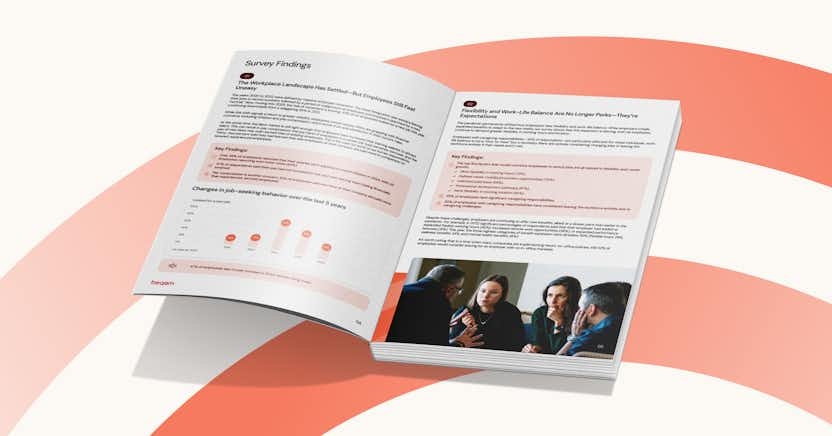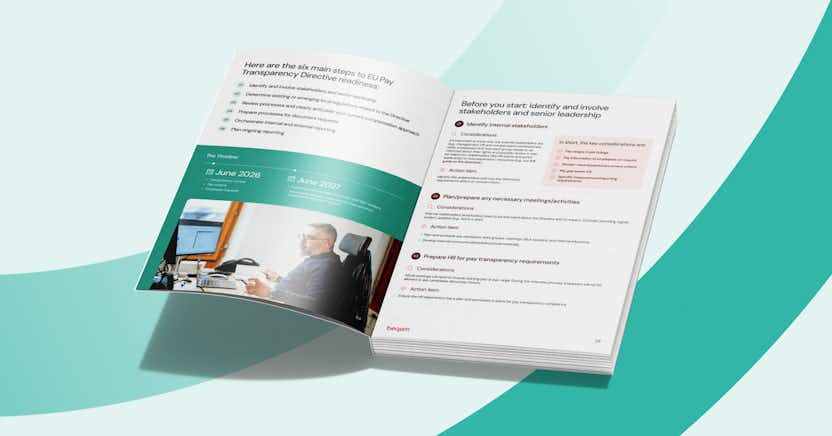6 Tips for Setting Employee Goals for the New Year

The new year has arrived and it’s tempting to dream big and plan big as we set goals for the year ahead. That’s good! Goals matter. But it’s important that these goals are measurable, attainable, adaptable, and most importantly, aligned with the company’s strategy and values.
To get you off to the best start in 2024, we have listed some straighforward tips that can be used as a reminder and guide for you and your team to set goals that deliver results.
1. Align employee goals with company objectives
Goals are typically cascaded down from above, but make sure that employees understand the connection between their individual goals and the overall company objectives. When an employee understands how their individual role and responsibilities contribute to the overall company aims, they’re typically more focused and motivated to achieve goals that result in success for both themselves and the company. Managers should keep this in mind by communicating the overall company goals to their team. In turn, this will keep employees more focused on their targets and their work in achieving them. Consider also building the company’s values into goals. If you have stated values, they are important, right?
2. Encourage employees to identify job-specific goals
Often managers will have certain key targets put in place for each employee, depending on their job. However, it can be useful to ask employees to identify what goals they themselves feel are important for their role within the organization, in the context of the larger company objectives. They may see something that you don’t. From here, if an employee’s self-suggested goals align with the company’s objectives, the manager can work in tandem with the employee to develop an action plan to attain those goals.
3. Set SMART goals
In order for employees to realistically achieve their goals it’s important to carefully plan clear, attainable, and trackable goals using the SMART (specific, measurable, achievable, relevant, and timely) framework. This method is a practical way to outline the steps necessary to reach any goal. Each element of the SMART goal framework works collaboratively to set boundaries, define next steps, identify necessary resources, and pinpoint indicators of progress. Consider using this framework when working with employees to help them create a strong foundation for success. But also think about making goals agile and adaptable, as in tip 4.
4. Make goals agile
Probably we have all had the experience of setting goals and then realizing that by the end of Q1 they are already outdated. Company strategy can change due to unforeseen circumstances like market changes or new opportunities opening up. Continuing with the original goals will result in irrelevant behaviors that don’t help the company. Agile goals are designed to be flexible and able to be changed as needed. They are incremental, focused on small steps rather than one big final deliverable. The focus is more on delivering value to the customer, whether external or internal, tracking what customers need or expect and shifting goals to match. Agile goals tend to be collaborative, based on working with other stakeholders to redefine shared objectives.
5. Keep track of goals with regular check-ins
If you don’t track your progress, you will never know if you are making any. Managers and their direct reports should track the progress of goals with transparency and accountability. The best way to do this is to conduct regular check-ins or one-to-one meetings with your team members. Regardless of the frequency of these conversations (weekly, monthly), their purpose remains the same – to keep the lines of communication open between managers and employees and keep track of goals that have been set. Your performance management system should be able to support manager check-ins and coaching. Simply put, the more employees and managers communicate, the better they will be able to work together to achieve goals, develop skills, and give or receive feedback. If quarterly goals are regularly evaluated and refreshed, then working towards annual goals will become smoother thanks to improved communication.
6. Reward employees who achieve their goals
It’s important to acknowledge employees who achieve or exceed any goals that have been set. This demonstrates that the company values their people and recognizes their commitment and hard work. It also serves to further motivate your employees to continue striving to achieve their goals. Alternatively, when hard work continuously goes unnoticed, employees will feel unmotivated and may reduce their productivity or even begin looking for a new job elsewhere where they feel more appreciated. So, build compensation strategies that align rewards with company, team, and individual goals, to help make sure that employees understand their value, perform at their peak, and are rewarded fairly for their contributions.
Goals are important. It’s worth taking the time to craft them well so that they drive the right behaviors and deliver the performance you need throughout the year.
Are you looking to transform how you manage performance in 2024? If so, book a meeting with one of our performance management experts here.
















